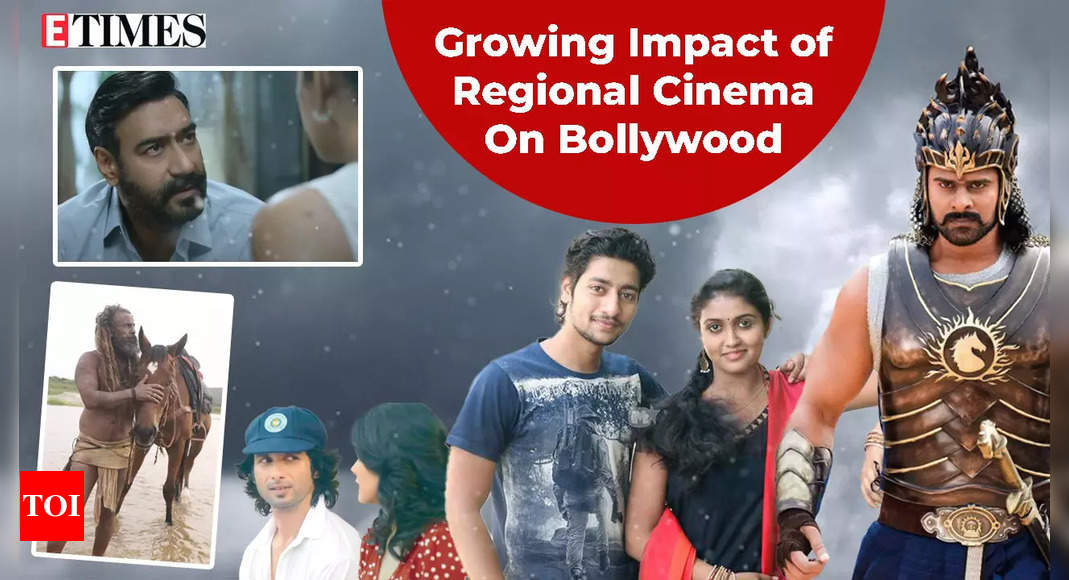
Historical Context and the Rise of Regional Cinema
India’s cinematic journey began with regional cinema, with the first full-length Indian film, Raja Harishchandra, being a Marathi production directed by Dadasaheb Phalke in 1913. However, as Bollywood grew in stature and audience, especially post-independence, regional cinemas like Bengali, Tamil, Telugu, Malayalam, and Kannada operated within their own spheres, often limited by linguistic boundaries and smaller budgets. These industries catered primarily to their local audiences, focusing on culturally specific stories, themes, and folklore that resonated deeply with regional identities. The real turning point for regional cinema came in the late 20th and early 21st centuries, marked by a few significant factors. Firstly, technological advancements made filmmaking more accessible, reducing production costs and allowing regional filmmakers to experiment with diverse themes and genres. Secondly, the rise of multiplexes in urban centers provided a platform for showcasing regional films to a broader audience, including non-native speakers. Thirdly, the advent of digital streaming platforms, such as Netflix, Amazon Prime, and Hotstar, broke down geographical barriers, enabling regional films to reach a global audience.
Thangalaan EXCLUSIVE: Malavika Mohanan, Vikram, Pa Ranjith On Challenges of Creating The KGF Epic
The New Wave of Regional Cinema
The 2000s witnessed the emergence of a “new wave” of regional cinema, particularly in industries like Marathi, Malayalam, Tamil, and Telugu. Filmmakers in these regions began to craft compelling narratives that were rooted in local cultures yet universal in appeal. Movies like Sairat (Marathi), Drishyam (Malayalam), Subramaniapuram (Tamil), and Baahubali (Telugu) not only achieved critical acclaim but also substantial commercial success. This new wave was characterized by strong storytelling, authentic performances, and a willingness to tackle complex social issues that Bollywood, in many instances, shied away from. Marathi cinema, for instance, began to receive national attention with films like Court (2014) and Sairat (2016). Sairat, in particular, became a cultural phenomenon, not only for its bold take on caste issues in India, but also for its commercial success, becoming the highest-grossing Marathi film of all time. Its impact was so profound that it was later remade into a Bollywood film, Dhadak (2018), although the Bollywood version was criticized for diluting the original’s socio-political commentary. Similarly, the Malayalam film industry, known for its content-driven approach, started gaining recognition outside Kerala with films like Bangalore Days (2014), and Drishyam (2013). The narrative complexity, character depth, and focus on realism set these films apart from the formulaic approach that Bollywood often adopted. The Telugu film industry, or Tollywood, also saw unprecedented success with the Baahubali franchise, which broke box office records globally, proving that regional films could compete with and even surpass Bollywood in terms of scale, production quality, and revenue.
Nani EXCLUSIVE Interview: You WON’T Believe What Superstitions ‘Saripodhaa Sanivaaram’ Star Follows
Impact on Bollywood
The rise of regional cinema has had a multifaceted impact on Bollywood, influencing various aspects of the Hindi film industry:
1. Storytelling and Themes: The success of regional films has compelled Bollywood to rethink its storytelling approach. For a long time, Bollywood was criticized for its formulaic plots, often recycling the same tropes of romance, action, and melodrama. The nuanced storytelling and bold themes explored in regional cinema have inspired Bollywood to venture into more diverse narratives. More rooted films like Munjya, Shaitaan, Stree 2, along with emotionally connected films like Jawan and Gadar 2 were made. Rise in regional cinema has also let names like Ritiesh Deshmukh and Mahesh Manjrekar to back films in their language like Mauli, Ved and Juna Furniture.
2. Casting and Talent Recognition
Regional cinema’s rise has also highlighted the wealth of talent outside Bollywood. Gone are the days when Bollywood would import actresses from South Cinema. Today more and more names from Bollywood like Kiara Advani, Emraan Hashmi, Saif Ali Khan, Bobby Deol, Janhvi Kapoor, are making their way to south films while stars like Prabhas, Yash, Prashanth Neel and SS Rajamouli have created a major fan following in the North. Also actors from South are now being given equal footage in Hindi films, like Jr. NTR is making his grand Hindi debut with War 2 opposite Hrithik Roshan. Nani in an interview also shared that he would love to collaborate with names like Rajkumar Hirani and Imtiaz Ali.

3. Remakes and Adaptations
The increasing popularity of regional films has led Bollywood to frequently adapt these movies for a wider Hindi-speaking audience. While this has been a long-standing practice, the success of regional films has accelerated this trend. This Christmas, Bollywood will get to see the remake of Thalapathy Vijay’s Theri as ‘Baby John’ with Varun Dhawan in the lead, while Drishyam 2 with Ajay Devgn had set the box office on fire. It was a remake of a film by the same name earlier made in Malayalam with Mohanlal in the lead.Few years ago post the success of Kabir Singh which was a remake of Arjun Reddy, Shahid Kapoor featured in Jersey- remake of Telugu film by the same name which had Nani in the lead.

4. Distribution and Market Strategies: The distribution strategies of Bollywood have also evolved in response to the regional cinema boom. Bollywood producers now recognize the potential of tapping into regional markets and have started to dub, or subtitle their films in multiple languages to reach a broader audience. Conversely, successful regional films are being dubbed in Hindi to cater to a pan-Indian audience, the recent example being Indian film distributor, Anil Thadani paying more than Rs 400 crore for North India rights of films like Kalki 2898 AD, Devara : Part 1, Pushpa 2 and Game Changer.
South Superstar Nani who recently released his film Surya’s Saturday stated, “ I’m not looking at Surya’s Saturday as a Pan-India film, in fact it is going to be a limited release in Kannada, Malayalam and Hindi. It is for people who want to watch the film in their own language. This is not to make any numbers or to be called a Pan- India film etc. I’m just trying to make the film available to those who have started watching me on OTT or elsewhere. A lot of time I get to see the love of the Hindi speaking audience, like they really liked my last few films like Hi Nanna and Dasara. Hence, Surya’s Saturday is primarily a Telugu release, and this time we are going for a slightly wider release in Tamil also .. There is no comparison with RRR, Pushpa or Baahubali .. I’m just a humble actor coming with a humble film.”
5. Streaming Platforms and Global Reach: The emergence of OTT (Over-The-Top) platforms has democratized access to films, allowing regional cinema to bypass traditional distribution challenges and reach a global audience. This shift has not only increased the visibility of regional films, but also encouraged Bollywood to produce more content-driven, niche films that might not have found a place in the traditional theatrical model. The success of regional films on these platforms has reinforced the idea that good content transcends language and cultural boundaries. Chiyaan Vikram, who is all set to release Thangalaan in Hindi a couple of weeks after its Tamil release said , “We are one country with so many cross cultures, we are a potpourri of so many tastes and flavors, and this is the best way to enjoy India. I don’t think we are barging into anyone’s territory, also post pandemic and thanks to OTT, all films are being appreciated . When I go to Andhra Pradesh, I’m asked when are you doing a straight Telugu film, or in Kerala I’m asked about doing a Malayalam film .. I tell them it doesn’t matter anymore , just like love has no language, cinema also has no language.”
Challenges and the Way Forward
While the rise of regional cinema is a positive development, it also presents certain challenges. There is a risk that Bollywood might commodify or dilute regional stories in its attempt to appeal to a broader audience. Additionally, the success of regional films has led to concerns about the over-commercialization of these industries, potentially compromising the very authenticity that sets them apart. Moving forward, it is crucial for Bollywood and regional cinema to coexist symbiotically, learning from each other while retaining their unique identities. The success of regional films should not be seen as a threat to Bollywood, but as a reminder of the rich tapestry of stories that India has to offer. By embracing diversity and encouraging innovation, both Bollywood and regional cinema can continue to flourish, contributing to a more vibrant and inclusive Indian film industry. In conclusion, the rise of regional cinema represents a paradigm shift in Indian filmmaking, challenging Bollywood’s hegemony and enriching the cinematic landscape with diverse voices and stories. As regional cinema continues to grow in stature and influence, it will undoubtedly shape the future of Indian cinema, encouraging both mainstream and regional filmmakers to push the boundaries of storytelling and creativity.






